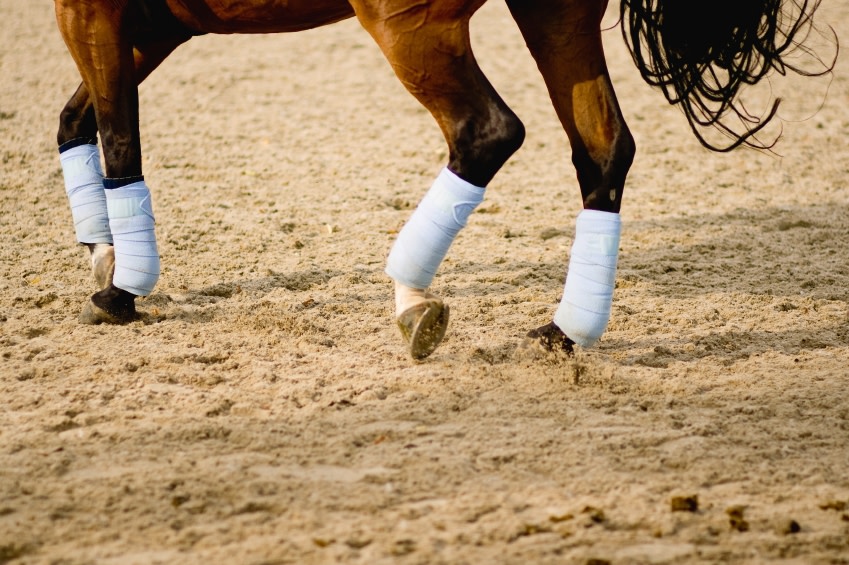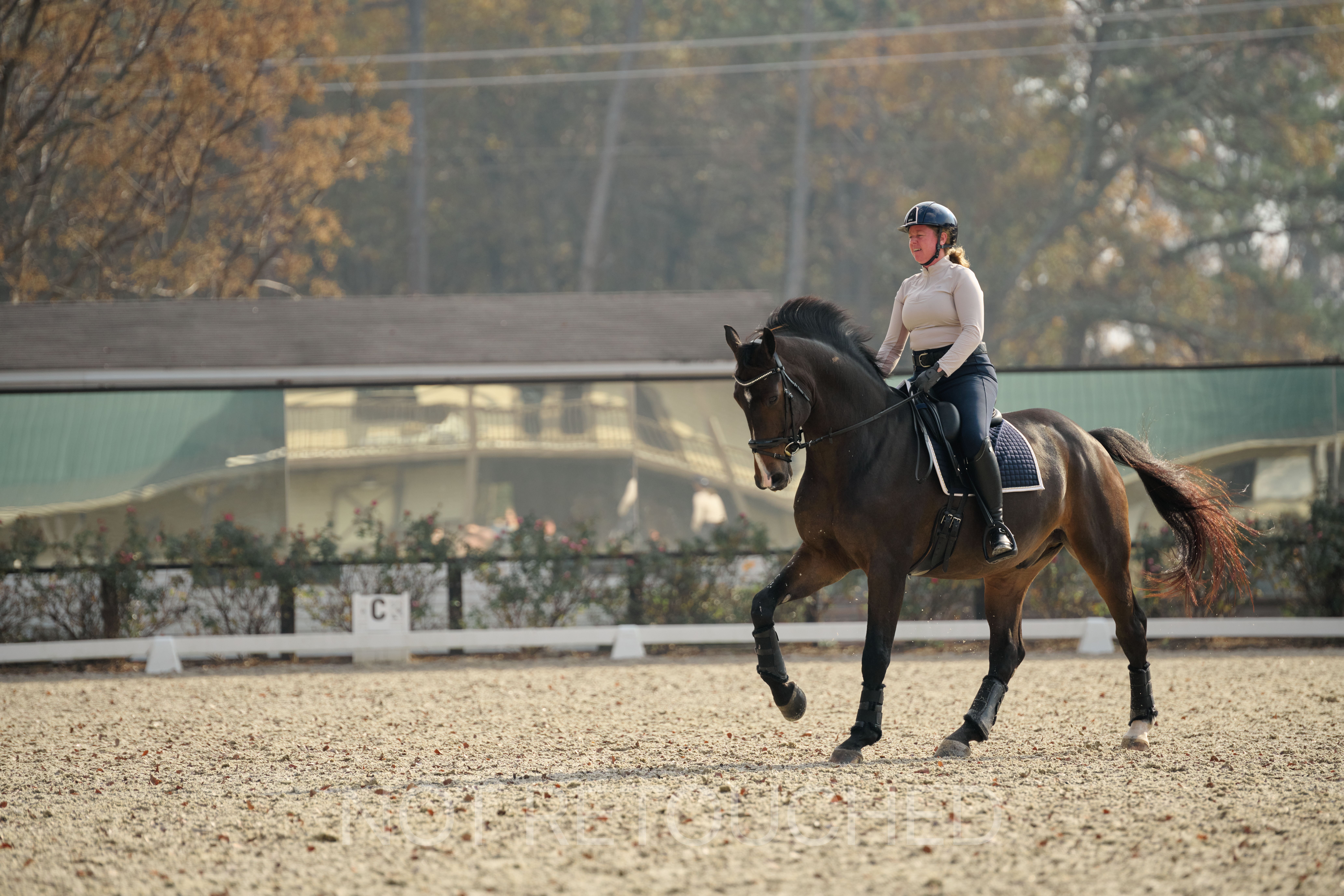Setting a Solid Foundation with Riding Arena Footing
Updated August 29, 2023

A well-constructed riding arena with ideal footing is the cornerstone of a safe, comfortable, and successful ride. The surface you ride on is pivotal in maintaining your horse's soundness and enhancing your training.
We’ll break down why having the optimal arena footing is not just a preference, but an essential component of your riding.
Components of a Riding Arena Surface

Before we dive into the different types of footing, let's take a quick look at the essential components that make up a well-designed riding arena:
- Footing: The top layer, directly under the horse's hooves, designed to offer cushioning and traction.
- Base: The foundation of your riding arena, typically made of compacted materials like crushed stone or gravel. A sturdy base provides stability and prevents uneven settling.
- Subbase: Situated beneath the base, the subbase provides additional support and helps with drainage to maintain the arena's integrity over time.
Types of Footing for Horse Riding Arenas

Whether you are building a new barn or adding footing to an existing arena, knowing the features, advantages, and disadvantages of different materials will help you make an informed choice to fit your needs and preferences.
Sand
Sand is a tried-and-true choice for riding arenas that’s for its shock-absorbing capabilities and consistent texture. Sand provides a cushioned surface that minimizes strain on your horse's joints, bones, and hooves during workouts. The consistency of sand helps contribute to reliable amount of traction and promotes stability.
Wood Products
Wood chips or shavings are cost-effective and widely available options worth considering. They give your horse a comfortable footing that ensures an adequate amount of grip. However, it's important to note that vigilance in maintenance and periodic replacement is required to prevent uneven surfaces and pitting.
Rubber
Rubber footing has gained in popularity over the past 10 years due to its durability and low maintenance. This option stands out for its environmentally conscious nature, as it is crafted from recycled materials.
Rubber footing offers impressive benefits such as shock absorption, which promotes your horse's joint health and overall comfort. Additionally, this material boasts excellent drainage properties, which contribute to maintaining a clean and dry surface. One downside of rubber footing is its availability as it can be challenging to find a reliable source in some areas of North America.
Stone Dust
Stone dust is a combination of finely crushed stone and dust that provides good drainage and robust support. A potential drawback that is true to its name, stone dust can be highly dusty! You can mitigate excessive amounts of dust by maintaining adequate moisture levels in the footing.
Common Missteps with Riding Arena Footing

While choosing the right footing is crucial, it's equally important to avoid certain missteps that could compromise your arena's or horse’s performance. Here are some common riding arena mistakes in footing, how they can impact your riding experience, and how to avoid them.
Too Hard of a Surface
One of the most common missteps when selecting footing involves opting for harder surfaces which may initially seem appealing due to less maintenance compared to other types of footings. However, too hard and unyielding surfaces lack a pivotal element that your horse needs – the cushioning required to reduce impact.
Consider alternatives or additives that provide cushioning and support to let your horse have a comfortable, gentle bounce instead of enduring the jarring impact of too hard a surface.
Deep Footing
When the footing is too deep, it hinders your horse's balance and stability, leading to an experience like trudging through sand at the beach. This situation is far from ideal for training and requires a lot of energy from your horse while potentially leading to harm to her joints.
The key lies in maintaining a consistently even depth of footing within your arena. The goal should be to create an environment offering firm support while providing a slight cushioning effect.
Dust Clouds
Some footings are more prone to being excessively dusty than others. Sand and stone dust cause more particles to drift into the air. Aside from creating an annoying dust cloud every time you ride, particles enter your horse’s lungs and can cause irritation. If you select a footing known for being dusty, consider a mister or watering system to regularly dampen the arena to manage dust.
Drainage Issues
Will your arena become a lake with every rain storm? Is water going to drain down the hill directly into your arena with no place to go? Addressing drainage issues carefully and early on while planning your arena’s construction is crucial as an arena that’s too wet can lead to safety issues and be unusable.
In addition to designated water run off areas, review your footing’s drainage capabilities. If your footing choice has poor drainage, consider combining it with a material that provides better drainage.
Improper Maintenance
Without the proper care, even the best footing can deteriorate over time leading to uneven surfaces, reduced traction, and overall compromised riding conditions. Remember that laying down the footing is just the first step. Consistent maintenance ensures that it remains safe and rideable.
Prioritize the following routine arena maintenance tasks:
- Dragging and Levelling: Regularly dragging the arena's surface helps distribute footing material evenly, preventing areas from becoming too compact.
- Watering: Controlled watering prevents excessive dust and maintains the ideal moisture content in the footing. This practice improves the stability of the footing.
- Aeration: Aeration involves perforating the footing surface to encourage water and air penetration. It helps prevent compaction and improves drainage to maintain an even and supportive surface.
- Adding Material: Over time, replenishing the footing material ensures it retains the characteristics you originally bought it for, such as cushioning and traction.
- Edge Maintenance: Regularly maintaining well-defined edges prevents footing from spilling out and retains the arena's shape. Taking a pitchfork to the arena wall edges and dragging the built up footing back over the rail towards the quarter line of the ring is a practice you can do weekly or as needed.
Picking the Right Arena Footing
As you select your footing, remember to consider your specific needs and geographic location. Factors such as the climate, frequency of use, and budget should guide your choice. Whether you prefer sand, rubber, or a mix of materials, the footing's depth, stability, and cushioning properties are vital.
When selecting a boarding location for your horse, remember to consider the quality of the arena footing as well. A well-maintained arena is central to your horse's training, health, and overall experience.
In the riding world, your arena's footing is the unseen hero that shapes every stride and jump. Remember, whether sand, rubber, or a unique blend of materials, choosing the appropriate footing lays the groundwork for a great ride!